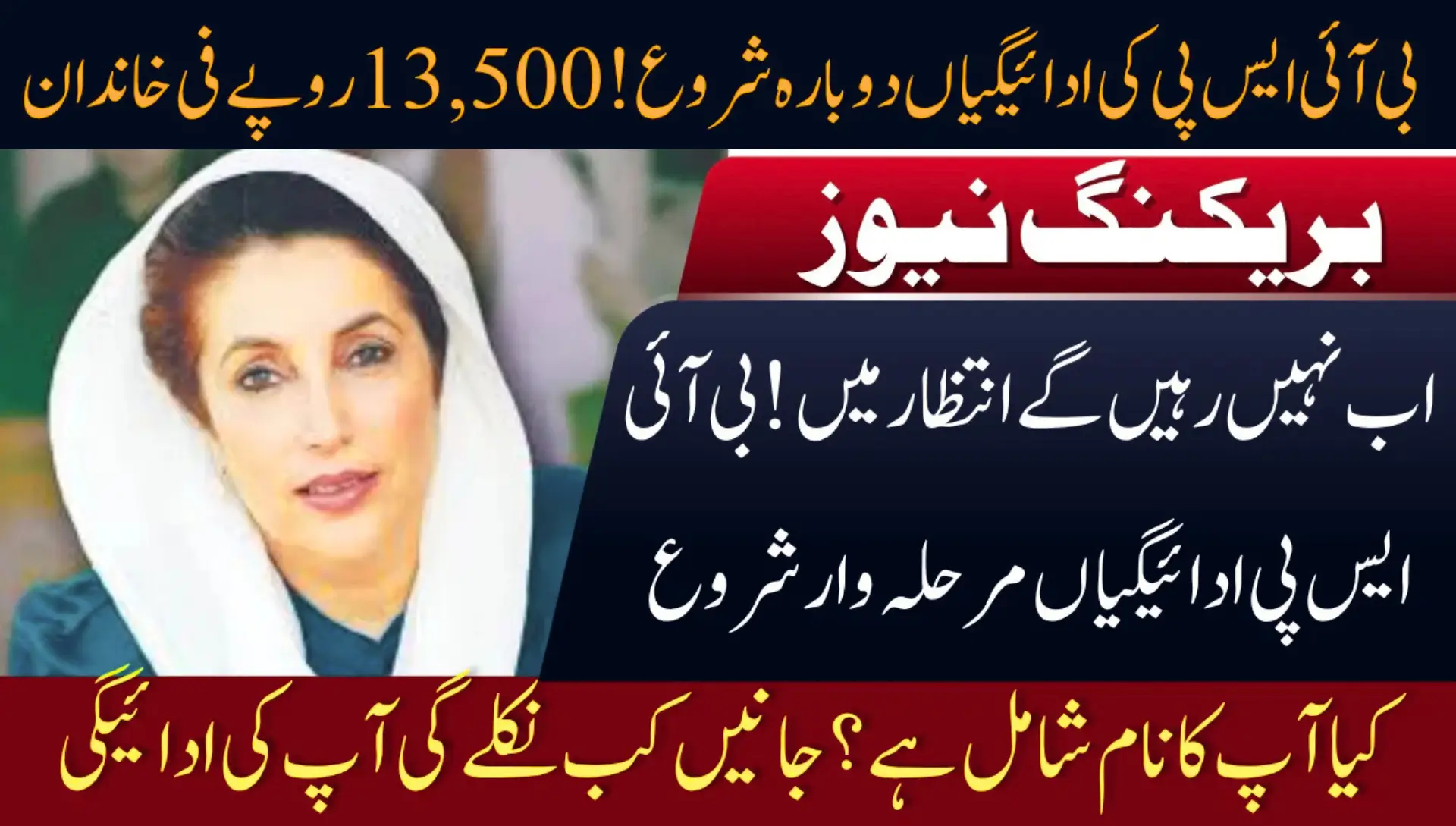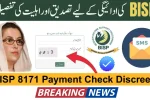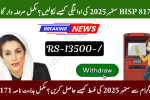BISP Payments Restart 2025: Check Withdrawal Date for Your Family

BISP Payments Restart 2025: Check Withdrawal Date for Your Family. The BISP payments restart 2025 has brought relief to millions of Pakistani families. With rising inflation and living costs, the government’s renewed focus on social protection ensures financial support reaches low-income households on time. In this guide, we explain everything you need to know about BISP payment status, withdrawal dates, and eligibility.
What is the BISP Payment Restart 2025?
The Benazir Income Support Programme (BISP) is Pakistan’s flagship social protection initiative aimed at helping financially vulnerable families. In 2025, the government officially announced the restart of BISP payments, following approval by the BISP board.
This program delivers quarterly financial assistance to registered families, supporting basic needs like food, healthcare, and education.
Key Highlights:
| Feature | Details |
|---|---|
| Payment Restart Date | January 2025 (Phase-wise rollout) |
| Quarterly Installment | Rs. 13,500 per eligible family |
| Disbursement Methods | Bank transfers, retailer shops, payment camps |
| Eligibility Verification | CNIC & updated NSER survey |
| Complaints Helpline | BISP call center for deduction or delay issues |
Who is Eligible for BISP 2025 Payments?
Only verified beneficiaries will receive the payments. Eligibility is determined through the NSER household survey and the 8171 portal. Families who have previously registered and updated their records remain qualified.
Eligible Beneficiaries Include:
- Families living below the poverty line
- Widows or divorced women with dependent children
- Elderly individuals without stable income
- Persons with disabilities
- Newly registered households under the 2025 NSER survey
This ensures support reaches those who genuinely need it while preventing duplicate or fake entries.
How to Check Your BISP Payment Status
The government has made it easier than ever for beneficiaries to verify payment status and withdrawal dates.
1. 8171 SMS Service
Send your CNIC number to 8171 to instantly check your eligibility and upcoming payment details.
2. BISP Online Portal
Visit the official BISP portal to track payment release dates, withdrawal locations, and installment history.
3. Bank SMS Alerts
If linked to a partner bank, beneficiaries will receive SMS alerts when payments are deposited.
4. BISP Helpline
For delays, unauthorized deductions, or technical issues, contact the BISP call center.
Tip: Always double-check your CNIC registration and NSER status before visiting payment outlets.
Withdrawal Date and Payment Collection Process
To avoid overcrowding, payments are disbursed in phases across Pakistan. Beneficiaries should verify their specific withdrawal date via 8171 SMS.
Collection Methods:
- Bank ATMs: Withdraw cash directly from partner bank ATMs with CNIC verification.
- Retailer Shops: Authorized shops provide payment to eligible CNIC holders.
- Payment Camps: In remote or rural areas, camps are set up to facilitate collection.
Important Notes:
- Carry your original CNIC to collect payment.
- No extra fee should be charged.
- Report any unauthorized deduction immediately at the BISP helpline.
Importance of the Updated NSER Survey 2025
The National Socio-Economic Registry (NSER) ensures that financial aid is transparent and targeted.
Benefits of Updated NSER Survey:
- Guarantees only deserving families receive support
- Expands coverage to newly identified low-income households
- Eliminates duplicate or fake entries
- Enhances accuracy for phase-wise disbursement
Public Reaction to BISP Payment Restart
The restart of BISP payments has been widely welcomed by low-income families, who consider the program a lifeline amid rising food and energy costs.
- Social media is full of thankful posts from beneficiaries.
- Civil society groups praise the timely disbursement and call for further transparency.
- Monitoring teams are stationed at payment points to ensure smooth operations.
Expert Insight: Timely payments reduce dependency on informal lending and empower families to manage daily expenses independently.
Government’s Commitment to Transparency
Authorities have emphasized:
- Payments will be delivered without political interference.
- Any agent deductions or delays will be addressed promptly.
- The quarterly stipend may be adjusted in future phases according to inflation.
- Continuous monitoring ensures accountability and fair distribution.
Step-by-Step Guide to Receiving Your BISP 2025 Payment
Step 1: Verify your eligibility via 8171 SMS or BISP portal.
Step 2: Ensure your NSER survey record is updated.
Step 3: Check your phase-wise withdrawal date.
Step 4: Visit the authorized payment point (bank, shop, or camp) with your CNIC.
Step 5: Collect the cash and confirm receipt through SMS if possible.
Phase-wise BISP Payment Example
| Phase | Districts | Payment Date |
|---|---|---|
| Phase 1 | Punjab (selected) | Jan 2025 |
| Phase 2 | Sindh (selected) | Feb 2025 |
| Phase 3 | KPK & Balochistan | Mar 2025 |
| Phase 4 | Nationwide | Apr 2025 |
Tips to Avoid Payment Delays or Issues
- Always keep your CNIC updated in NSER and 8171 portal
- Only collect payments from authorized outlets
- Report discrepancies immediately through BISP helpline
- Regularly monitor BISP portal notifications
FAQs
Q1: When will BISP payments restart in 2025?
A: Payments restarted in January 2025 and are being released in a phase-wise manner across Pakistan.
Q2: How can I check my BISP withdrawal date?
A: Send your CNIC to 8171 SMS service or log in to the BISP online portal.
Q3: Who is eligible to receive BISP payments?
A: Eligible beneficiaries include low-income families, widows, elderly citizens without income, differently-abled persons, and newly registered households under NSER 2025.
Q4: What are the payment collection methods?
A: Cash can be withdrawn from bank ATMs, authorized retailer shops, or rural payment camps.
Q5: What should I do if my payment is delayed or deducted?
A: Contact the BISP helpline immediately to lodge a complaint.
Conclusion
The BISP payments restart 2025 is a significant step in supporting Pakistan’s most vulnerable households. With Rs. 13,500 per quarter, millions of families can manage daily needs like food, healthcare, and education.













